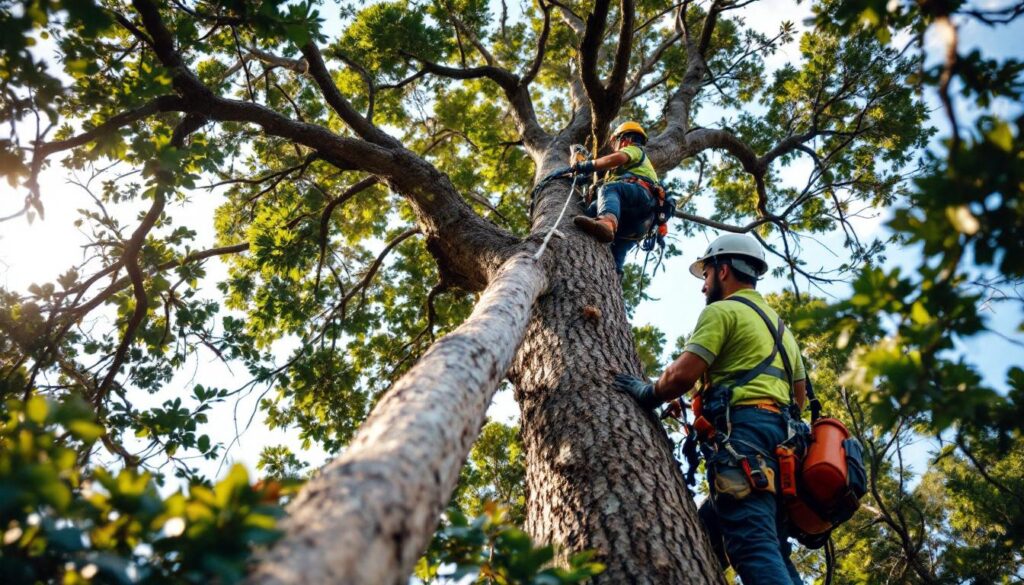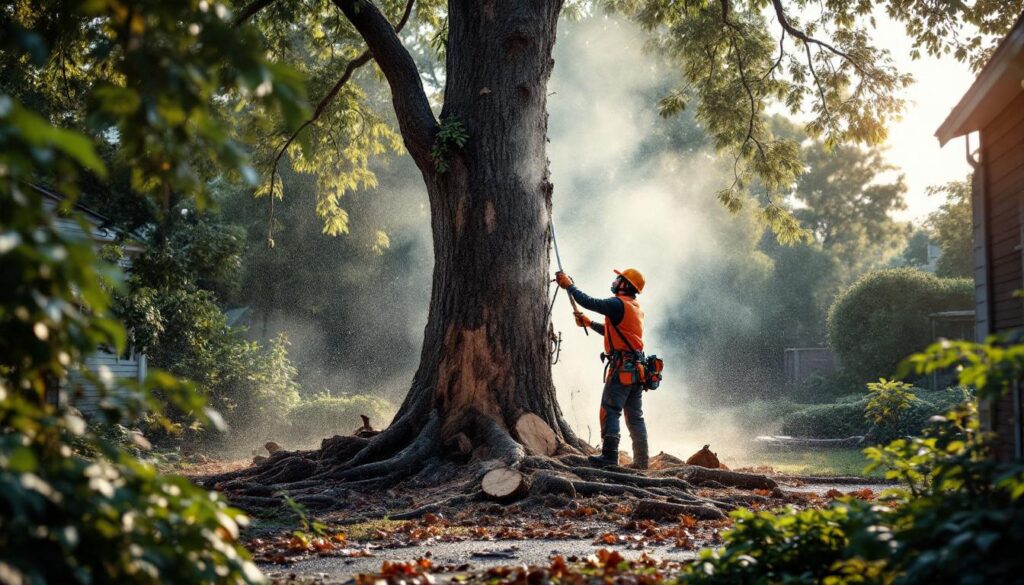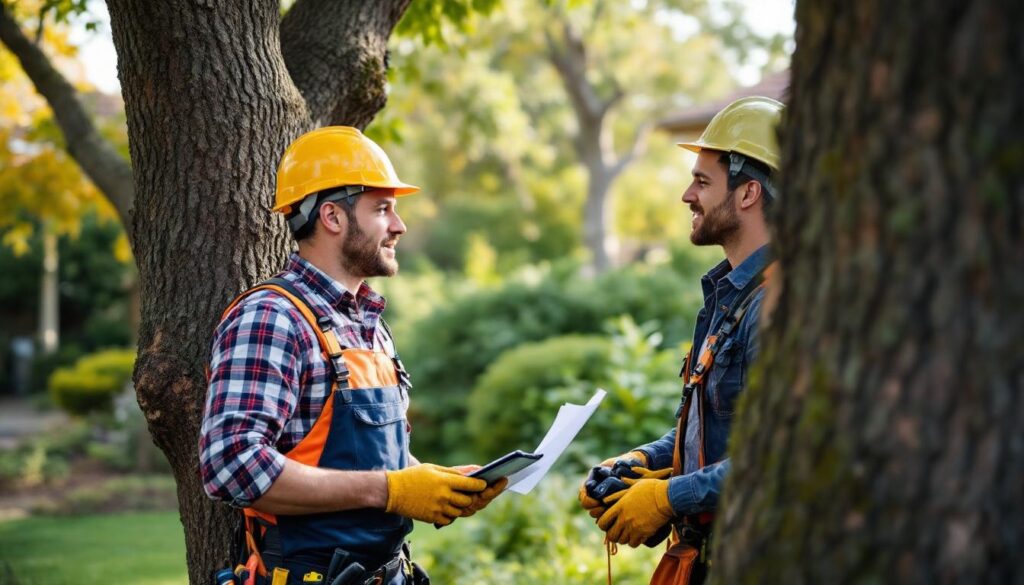Arborist Gordon has decades of specialised experience in professional tree care, helping property owners maintain vibrant, healthy landscapes through evidence-based arboriculture practices. His expertise centres on sustainable tree management techniques that balance aesthetic appeal with long-term tree vitality.
Canopy thinning—also called crown thinning—is a selective pruning method where certified arborists strategically remove specific branches to reduce canopy density. This precision technique differs fundamentally from indiscriminate cutting, requiring a deep understanding of tree biology and growth patterns.
The practice addresses a critical challenge facing mature trees: overcrowded canopies that block essential sunlight from reaching inner foliage and understory plants. When Arborist Gordon performs canopy thinning, he opens pathways for light to reach previously shaded areas, triggering enhanced photosynthesis throughout the entire tree structure.
This targeted approach delivers measurable improvements in tree health and light penetration, creating stronger, more resilient specimens capable of withstanding environmental stresses while supporting diverse ecosystems beneath their branches.
What is Canopy Thinning?
Canopy thinning, also known as crown thinning, is a horticultural technique that involves the careful removal of specific branches within a tree’s crown. The primary objective of this practice is to reduce the overall density of foliage while still preserving the tree’s natural shape.
Unlike indiscriminate cutting methods, canopy thinning targets individual branches for removal. By doing so, it creates a more open structure within the tree, allowing sunlight to penetrate and air circulation to improve.
What Does Canopy Thinning Involve?
The process of canopy thinning focuses on removing:
- Crossing or rubbing branches that compete for space
- Weak or damaged limbs that drain resources from the tree
- Excess interior growth that blocks light from reaching lower branches
- Branches growing at awkward angles
How Do Arborists Perform Canopy Thinning?
Arborists like Gordon assess each tree individually to determine which branches should be removed during canopy thinning. Several factors are taken into consideration during this evaluation, including:
- The species of the tree
- The age of the tree
- The current health status of the tree
The goal of canopy thinning is to achieve an evenly distributed canopy where remaining branches have adequate space to develop. This selective approach differs significantly from topping or excessive pruning, which can severely damage the structure of a tree.
Why Is Canopy Thinning Important?
Proper canopy thinning never removes more than 15-20% of the crown’s foliage in a single session. This preservation of foliage is crucial as it allows the tree to continue photosynthesizing and sustaining itself.
By implementing this technique, arborists can promote healthy growth patterns in trees while also enhancing their overall appearance.
How Does Canopy Thinning Improve Light Penetration in Trees?
Light penetration enhancement through canopy thinning occurs when strategic branch removal creates pathways for sunlight to reach previously shaded areas of the tree. Dense canopies naturally block sunlight from reaching inner branches and leaves, limiting the tree’s ability to photosynthesize efficiently throughout its entire structure.
When Arborist Gordon removes carefully selected branches, sunlight can penetrate deeper into the canopy. This increased exposure activates dormant leaves and stimulates growth in areas that were previously starved of light. The inner foliage begins producing energy through photosynthesis, contributing to the tree’s overall vigour.
The benefits extend beyond the tree itself. Ground-level vegetation beneath the canopy receives more direct sunlight, supporting a healthier understory ecosystem. This creates ideal conditions for:
- Native wildflowers and ground cover plants
- Beneficial insects and pollinators
- Soil microorganisms that thrive in warmer, sunlit conditions
Trees with improved light distribution develop more uniform growth patterns. Rather than concentrating energy production in the outermost leaves, the entire canopy becomes productive. This balanced photosynthetic activity strengthens the tree’s ability to store nutrients, resist disease, and maintain structural integrity. The enhanced light exposure also helps regulate the tree’s natural hormone production, promoting optimal development across all growth zones.
How Does Canopy Thinning Improve Air Circulation?
Canopy thinning creates strategic openings throughout the tree’s crown, allowing wind to pass through rather than against the structure. This air circulation improvement through canopy thinning transforms a dense, impenetrable canopy into a permeable system where breezes flow freely between branches and foliage layers.
The reduction in wind resistance serves multiple purposes beyond structural stability:
- Faster Moisture Evaporation: When air moves efficiently through the canopy, moisture that accumulates on leaves and bark surfaces evaporates more quickly.
- Prevention of Fungal Diseases: Stagnant, humid conditions within dense canopies create ideal breeding grounds for fungal pathogens such as powdery mildew, anthracnose (a common leaf disease described in detail here), and various leaf spot diseases.
Arborist Gordon demonstrates how canopy thinning improves light and tree health through careful branch selection. By removing crossing branches and those growing towards the tree’s interior, he establishes clear pathways for airflow. The technique targets specific areas where moisture tends to linger—particularly in the lower and middle canopy sections.
Trees with improved air circulation dry faster after rainfall or morning dew. This rapid drying period significantly reduces the window of opportunity for fungal spores to germinate and establish infections. The practice proves especially valuable for species prone to foliar diseases or those planted in humid, sheltered locations where natural air movement is limited.

How Does Canopy Thinning Promote Healthier Tree Growth?
Canopy thinning eliminates resource competition between branches, allowing each remaining limb to access adequate light, water, and nutrients. When branches crowd together in a dense canopy, they essentially compete against one another for survival. This competition weakens the entire tree structure, making it vulnerable to disease and environmental stress. By strategically removing select branches, healthier growth stimulation through canopy thinning ensures that remaining limbs develop stronger wood and more robust connections to the trunk.
The practice significantly reduces mechanical stress on individual branches. Dense canopies force branches to bear excessive weight from neighbouring limbs whilst simultaneously stretching towards available light sources. This dual pressure creates weak growth patterns and increases the likelihood of branch failure. Thinning redistributes the tree’s energy more efficiently, directing nutrients to fewer, healthier branches rather than spreading resources thinly across an overcrowded canopy.
Trees respond to professional thinning by developing:
- Thicker branch diameter due to improved nutrient allocation
- Stronger wood density from reduced mechanical stress
- Enhanced root-to-canopy balance supporting long-term stability
- Better wound closure rates when natural pruning occurs
The result is a more resilient tree capable of withstanding environmental pressures whilst maintaining vigorous growth throughout its lifespan.
Can Canopy Thinning Reduce the Risk of Storm Damage?
Storm damage prevention through canopy thinning wore points during high winds, creating hazards that can damage the tree and nearby property.
The thinning process targets specific problem areas:
- Crossing branches that rub against each other, creating weak points
- Narrow branch attachments prone to splitting under stress
- Dead or dying wood that lacks structural integrity
- Overly dense clusters that catch wind like sails
A well-thinned canopy allows wind to pass through the tree rather than against it. This aerodynamic effect significantly reduces the force exerted on the trunk and major limbs during storms. Trees with properly managed canopies experience less swaying and bending, which protects their root systems from becoming destabilised.
The structural benefits extend beyond the tree itself. By removing branches that could break and fall, canopy thinning protects homes, vehicles, power lines, and pedestrian areas. A single falling limb during a storm can cause thousands of pounds in damage, making preventative thinning a cost-effective investment.
Arborist Gordon emphasises that timing matters for storm preparation. Thinning performed during the dormant season allows trees to heal before facing severe weather, whilst emergency thinning after storm damage requires careful assessment to avoid further stress.
What Aesthetic and Ecological Benefits Does Canopy Thinning Offer?
Does canopy thinning make trees look better? A properly thinned canopy creates a more balanced, sculptural form that enhances any landscape. Dense, overgrown branches often create an unkempt appearance, whilst strategic thinning reveals the tree’s natural architecture and branching patterns. The result is a cleaner silhouette that allows viewers to appreciate the tree’s structure and form.
Well-maintained trees with thoughtfully thinned canopies become focal points rather than visual clutter. Property owners benefit from improved sightlines and a more polished landscape aesthetic. The practice removes crossing branches, dead wood, and poorly positioned growth that detract from the tree’s beauty.
How does canopy thinning support local ecosystems? Increased sunlight reaching the forest floor transforms the understory environment dramatically. Native wildflowers, ferns, and ground-covering plants thrive in these newly illuminated spaces, creating layers of vegetation that support diverse wildlife populations.
This aesthetic improvement and biodiversity enhancement through canopy thinning creates habitat for:
- Ground-nesting birds seeking shelter in understory vegetation
- Pollinators attracted to flowering plants beneath the canopy
- Small mammals that depend on varied plant species for food and cover
- Beneficial insects that control pest populations
Moreover, as outlined in these guidelines to urban forest restoration, canopy thinning also plays a crucial role in urban forestry by improving light penetration and overall tree health. This demonstrates that ecological benefits extend beyond the tree itself, fostering entire micro-ecosystems that contribute to environmental resilience and natural beauty. Visit https://www.gleneira.vic.gov.au/about-council/news/latest-news/canopy-tree-protection-local-law to get more about canopy tree protection local law.
Why Should Canopy Thinning Be Performed by Certified Arborists Like Arborist Gordon?
The importance of certified arborists in selective pruning cannot be overstated when it comes to maintaining tree health through canopy thinning. Professional arborists have specialised training in tree biology, structural mechanics, and species-specific growth patterns that determine which branches to remove and which to preserve.
Improper thinning can severely damage a tree’s structure and compromise its long-term viability. Removing too much foliage disrupts the tree’s energy production, while cutting in the wrong locations creates entry points for disease and pests. Certified professionals like Arborist Gordon understand the delicate balance between achieving desired results and maintaining the tree’s natural defence systems.
What Do Qualified Arborists Assess?
The expertise of qualified arborists goes beyond simple branch removal. They evaluate:
- Tree species requirements and growth habits
- Structural integrity and weight distribution
- Disease indicators and pest presence
- Optimal timing for pruning interventions
- Long-term canopy development goals
Why Choose Professional Arborists?
Professional arborists also have the right insurance and follow industry safety standards, protecting both the tree and property owners from potential liability during the thinning process. Additionally, they are well-versed in tree pruning techniques that ensure optimal results while safeguarding the health of the tree.

Conclusion
How canopy thinning improves light and tree health becomes clear when you understand the comprehensive benefits this practice delivers. From enhanced photosynthesis and air circulation to reduced storm damage risk and improved biodiversity, proper canopy thinning transforms tree vitality.
Arborist Gordon services combine decades of specialised knowledge with proven techniques that protect your trees whilst maximising their health potential. His expertise ensures every cut serves a purpose, maintaining structural integrity whilst achieving optimal light distribution throughout the canopy.
Your trees deserve professional care that balances immediate needs with long-term sustainability. The canopy thinning benefits summary demonstrates how this single intervention creates cascading improvements across multiple aspects of tree health and landscape quality.
Ready to enhance your trees’ health and longevity? Contact Arborist Gordon today to schedule a comprehensive tree assessment. His personalised approach evaluates your specific landscape conditions and develops a tailored maintenance plan. Don’t wait until storm damage or disease strikes—invest in preventative care that keeps your trees thriving for generations.
Related : Arborist Carlingford how to plan pruning and maintenance for large trees
